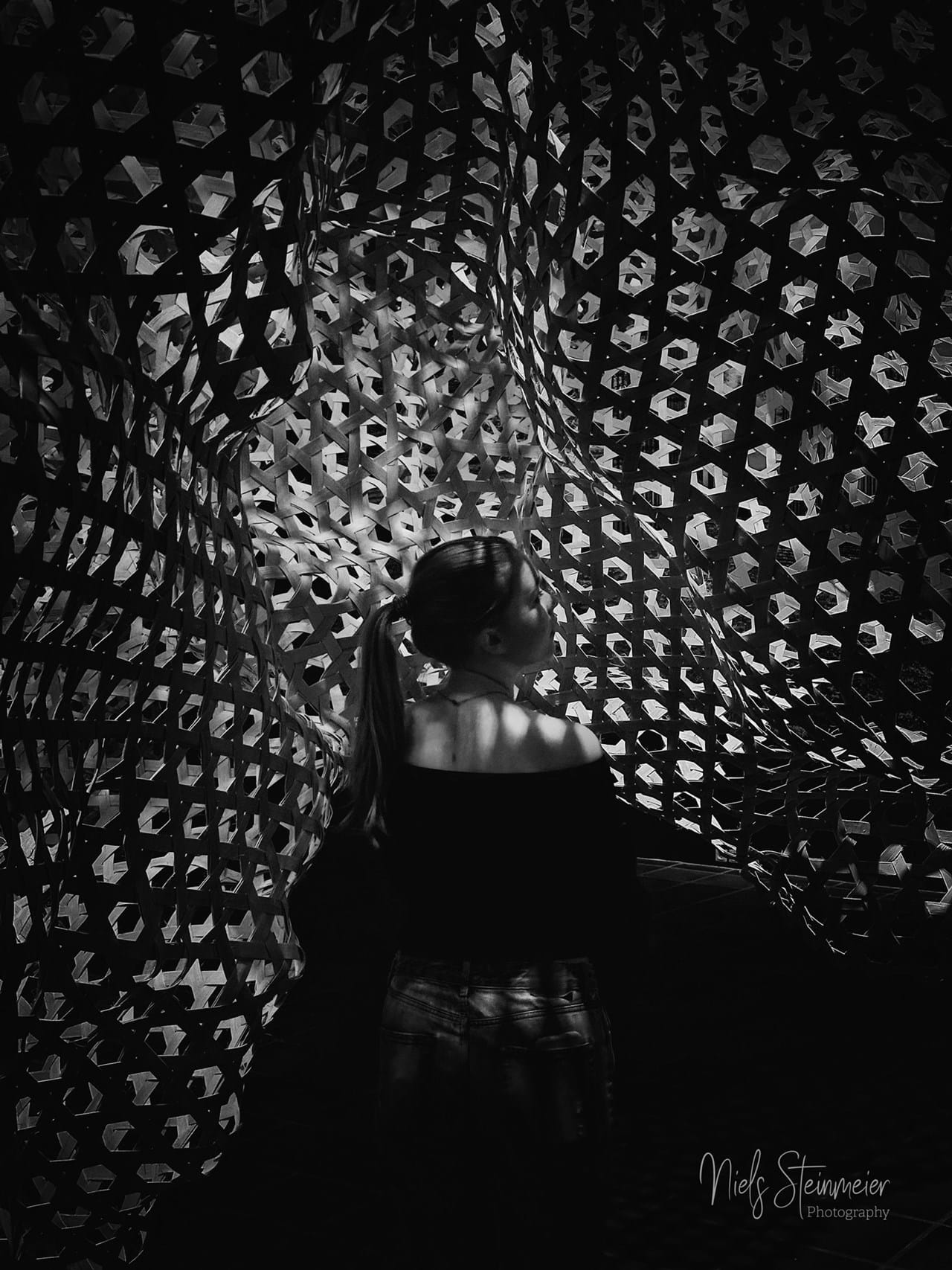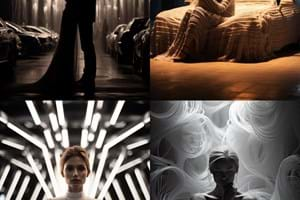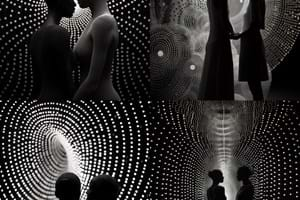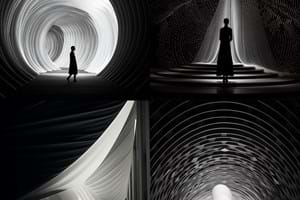In the world of photography, the allure of black and white images remains timeless. The monochromatic palette has a unique way of conveying emotions and telling stories that color sometimes struggles to capture. For years I've been passionate about photography, and lately also artificial intelligence – and not least, the intersection of these two.
So, I'd like to share with you a black and white photograph I took at the danish museum, Louisinana. Unfortunately, the image is shot wiht my iPhone, and not with my mirrorless Canon.
I tried to capture the model within this beautiful stucture, and the interplay of light and shadow that often defines the essence of black and white photography.
But what makes this blog post particularly exciting is that I'm not just showing you a photograph. I'm going to let you witness the evolving capabilities of artificial intelligence, specifically Midjourney's DESCRIBE function, in analyzing and interpreting this image.
The Photograph
Before we dive into the world of A.I. and photography, let me just show you the photograph itself. The monochrome tones create a sense of nostalgia and mystery, drawing the viewer into the narrative of a strange and different place. The play of light and dark, the intricate textures, and the composition all contribute to the emotional depth of the image.


 ©Niels Steinmeier 2023
©Niels Steinmeier 2023



